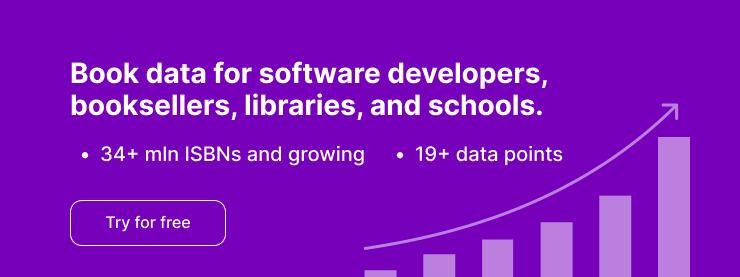
We are used to searching by ISBN as the easiest way to find book data. However, ISBN is a relatively new book identification method, widely adopted in the 1970s.
When Johannes Gutenberg produced the first printed book in the fifteenth century, he probably wasn’t too concerned about book identification – his printed books never carried even his name or publishing date. That wasn’t a big deal because the book industry was in its infancy, and few books were published back in the day.
- How Were Books Identified Before ISBN Came to Life?
- Who Saved the Publishing Industry from Chaos?
- Major Benefits of ISBN
In the modern world, with millions of new titles published every year, we do need a clear identification system. So nowadays, every printed book, be it a masterpiece or utter crap, needs to have an ISBN for it to get into the US distribution network.
How Were Books Identified Before ISBN Came to Life?
Before the International Standard Book Number (ISBN) system was introduced, books did not have a unified international book identifier. This is one of the reasons why we don’t have pre-ISBN-era books in our database.
Books were identified using a number of different methods. One of them was to identify books by their title and author. This information was typically printed on the cover, title page, and spine of the book, and it was used to search for books. However, this method was not always reliable, as books with similar titles or authors could be confused with one another.
Many publishers used a unique imprint or logo to identify their books. These imprints could be found on the title page or the spine of the book. With their help, it was possible to find out the publisher and other information about the book. However, this method was not standardized, and different publishers used different imprints or logos, making it difficult to identify books across different publishers.
Another method of book identification was library catalog cards. Each book in the Library of Congress, for example, had a card with an identification number that contained information about the book, including the author, title, publisher, and publication date. These cards were used by librarians to track and manage books in their collections. However, this method was limited to libraries, and it was not accessible to the general public.
Booksellers and distributors also used their own systems for tracking and identifying books. They kept records of the books they had in stock and the publishers that produced them, and they could use these records to order more copies of the same book. However, this method was not standardized, and different booksellers and distributors used different systems, making it challenging to track books across different sellers and distributors.
The absence of a unified approach to book identification made it more and more challenging to manage book data as the publishing industry grew. The more titles got printed, the more difficult it became to handle them.
Who Saved the Publishing Industry from Chaos?
Salvation came from the other side of the Atlantic. In 1965, W. H. Smith, the largest book retailer in the UK at the time, announced that it planned to start using a computerized warehouse in 1967. Due to this decision, W. H. Smith decided to create a standard numbering system for the books it carried. The innovation caught the interest of the International Organization for Standardization (ISO), which eventually led to the introduction of the International Standard Book Number (ISBN). ISBN was officially approved as an ISO standard and given the designation ISO 2108.
Major Benefits of ISBN
The introduction of the ISBN system has brought multiple benefits to the book industry, including:
- Standardization: The ISBN system has standardized the way books are identified, making it easier to manage and track books.
- Accuracy: The ISBN system has reduced errors in book identification and tracking, ensuring that books are correctly identified and tracked.
- Efficiency: The ISBN system has made the process of identifying and tracking books more efficient, saving time and resources.
- Accessibility: The ISBN system has made it easier for books to be distributed, making them more accessible to readers worldwide.
Conclusion
As you can see, the identification of books in the pre-ISBN era was decentralized and, therefore, fragmented. If you want to learn more about how the book industry transitioned to the standardized ISBN system, read our recent article on The History and Evolution of the ISBN System.
The introduction of the ISBN system dramatically simplified the identification and tracking of books. Having reliable access to book data is crucial for booksellers, publishers, libraries, educational institutions, and all other organizations involved in the book industry. With 33+ million books and growing, ISBNdb is one of the biggest book databases. Affordable subscription options come with a free trial and the ability to cancel at any time.







